Hydraulic systems are crucial in various industries due to their ability to generate high levels of force and precise control. Understanding the key technical data and calculations is essential for designing and optimizing these systems.
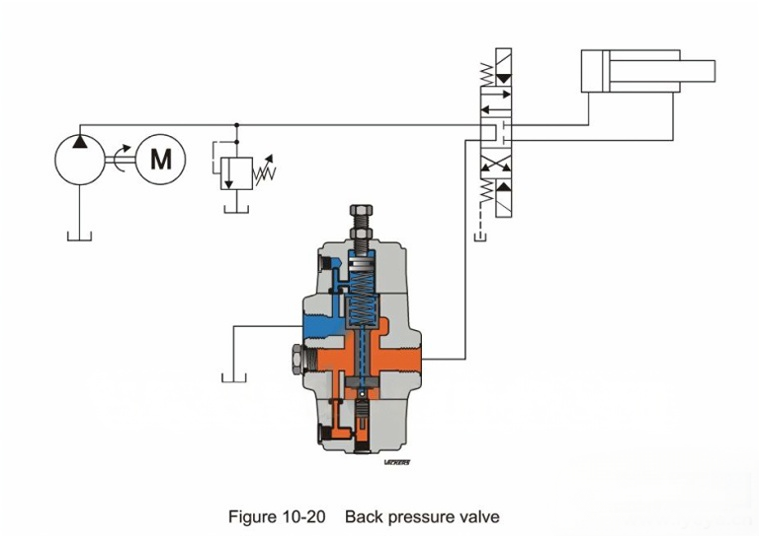
Formula to Calculate Hydraulic Pressure
Hydraulic pressure is calculated using Pascal's Law, which states that pressure exerted on a confined fluid is transmitted equally in all directions.
The formula is:

Where:
P is the pressure in pascals (Pa),
F is the force applied in newtons (N),
A is the area of the piston in square meters (m²).
Hydraulic Flow Rate Calculation
The flow rate in a hydraulic system can be calculated using the continuity equation, which states that the volume of fluid entering a conduit must equal the volume exiting, assuming no leaks.
The formula is:
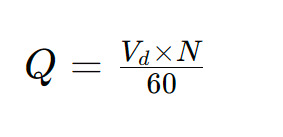
Where:
Q is the flow rate in liters per minute (L/min),
V is the displacement volume per revolution in liters (L/rev),
N is the pump speed in revolutions per minute (RPM).
Hydraulic Power Calculation
The power of a hydraulic system can be calculated using the following formula:
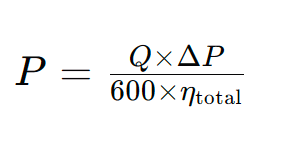
Where:

Hydraulic System Efficiency Calculation
The efficiency of a hydraulic system is typically calculated using the volumetric efficiency formula:
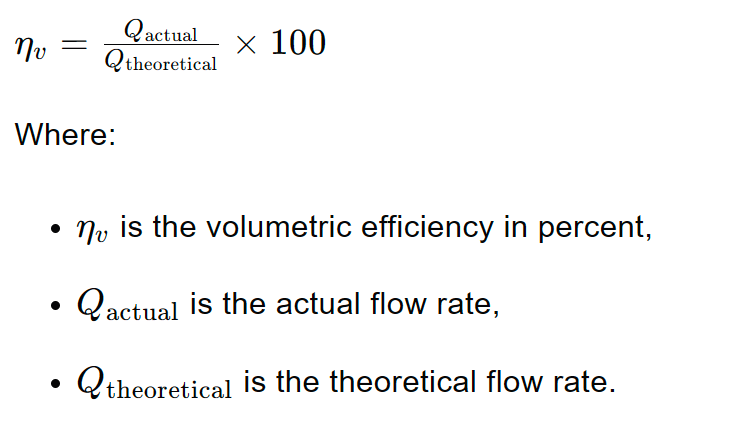
Example Calculation
Let's consider a hydraulic system with a pump that has a displacement volume of 0.01 L/rev and operates at 1000 RPM. The system requires a pressure differential of 150 bar and has an overall efficiency of 85%.
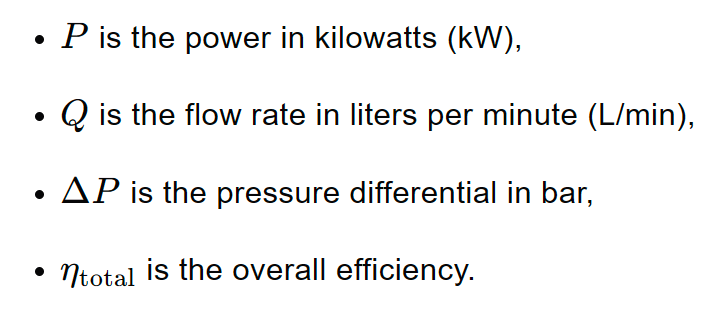
Conclusion
Accurate calculations of hydraulic pressure, flow rate, power, and efficiency are essential for designing and optimizing hydraulic systems. These calculations help ensure that the system operates within safe limits and meets the required performance criteria.



